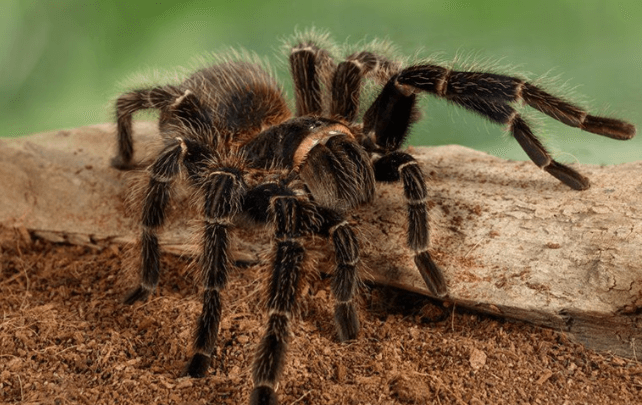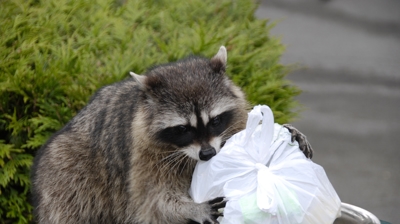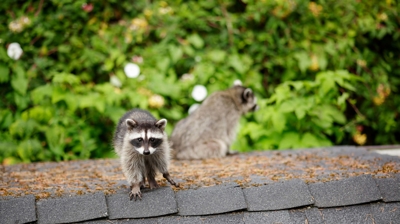
Walnut Caterpillar Identification & Prevention
Walnut Caterpillars In Del Rio, TX

Do you have a walnut caterpillar problem on your Texas property? Learn more about these pests and the problems they can cause with this informational guide.
Frequently Asked Questions About Walnut Caterpillars
What are walnut caterpillars?
Walnut caterpillars are common in Texas. They go through five larval stages before pupating and becoming adult moths. During the first four larval stages, walnut caterpillars are reddish-brown in color with white stripes. In the fifth and final larval stage, they are black and gray with long hairs. When fully grown, they can reach up to two inches in length.
Walnut caterpillar moths first emerge for the season in mid to late spring. It takes a little over a month for a walnut caterpillar to complete its life cycle. In a typical season, walnut caterpillars can complete two to three generations.
Are walnut caterpillars dangerous?
Since many hairy caterpillars are dangerous to come into contact with, it’s important to know which ones you need to look out for. Thankfully, walnut caterpillars are not a species of caterpillar that is harmful to your health. They don’t sting, and they are not poisonous or venomous.
The major problem with walnut caterpillars is the damage they do to the trees they feed on. In their early larval stages, they feed on leaves in large groups. Due to the many walnut caterpillars that hatch together, they can quickly defoliate localized areas of trees. In their later larval stages, walnut caterpillars spread out, allowing the damage to spread throughout the tree.
Why do I have a walnut caterpillar problem?
Walnut caterpillars only feed on specific tree species. If you have walnut trees, hickory trees, butternut trees, pecan trees, or other trees or shrubs in the Juglandaceae family on your property, you’ll likely find walnut caterpillars on your property as well. Since they hatch in large numbers and quickly complete their life cycles, an infestation can easily grow out of control.
Where will I find walnut caterpillars?
Walnut caterpillars will primarily be found on the foliage of trees and shrubs in the Juglandaceae family, such as hickory, walnut, butternut, and pecan trees. You’ll find their eggs laid in a large group, in a single layer, on the underside of leaves. Up to 600 eggs can be laid at one time. Walnut caterpillar eggs are white and big enough to easily see.
Once hatched, you’ll see the reddish-brown larvae in large colonies feeding on the leaves of the trees or shrubs they inhabit. As they reach the later stages of development, the caterpillars spread throughout the tree canopy.
How do I get rid of walnut caterpillars?
If you have a small yard with trees that you can easily access, you may be able to remove the leaves with eggs on them as you find them. However, this isn’t always practical since these leaves may be out of reach, or you may have too many trees to make this a sustainable option.
If you are finding a lot of walnut caterpillars on your property, or if you’ve noticed that they are beginning to defoliate your trees, contact Gold Star Exterminators. We offer services to eliminate your walnut caterpillar infestation and protect your trees from the damage they cause.
How can I prevent walnut caterpillars in the future?
If you want to fully prevent a walnut caterpillar infestation, you’ll need to remove the trees in your yard that are in the Juglandaceae family. However, it’s likely that you don’t want to get rid of your trees. If that’s the case, prevention requires you to be proactive in looking for walnut caterpillars and their eggs.
Removing the eggs is one way to try to keep walnut caterpillars under control. However, because this takes a lot of time and isn’t usually effective at removing eggs in hard-to-reach locations, we recommend walnut caterpillar treatments from Gold Star Exterminators to keep walnut caterpillars at bay.
Our Blog
Stay In The Know
-
 The Importance of Calling for Roach Control ASAPRead More
The Importance of Calling for Roach Control ASAPRead More -
 Why Over-the-Counter Pest Solutions Often FailRead More
Why Over-the-Counter Pest Solutions Often FailRead More -
 Habits to Adopt for a Pest-Free LifestyleRead More
Habits to Adopt for a Pest-Free LifestyleRead More -
 What is the Best Way to Get Rid of Rodents?Read More
What is the Best Way to Get Rid of Rodents?Read More -
Warning Signs of a Termite Infestation in Your HomeRead More
-
 Preventing Wildlife Damage to Your Home During Texas WintersRead More
Preventing Wildlife Damage to Your Home During Texas WintersRead More -
 5 Tricks to Get Wildlife Out of Your HomeRead More
5 Tricks to Get Wildlife Out of Your HomeRead More -
 5 Tricks to Keep Wildlife Off Your PropertyRead More
5 Tricks to Keep Wildlife Off Your PropertyRead More
.2507170421291.jpg)
.2504070741252.jpg)
.2502171210568.jpg)
.2412031310087.jpg)




